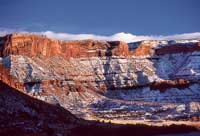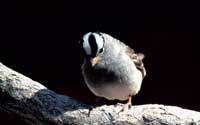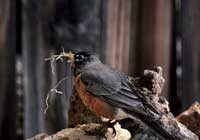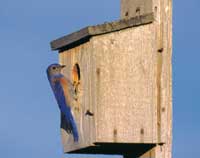 This year represents the 113th annual Christmas Bird Count (CBC), one of the longest running citizen science projects in the United States. The counted started as a non-consumptive alternative to a traditional Christmas Day activity where participants blasted away at birds and mammals in a terrible waste of wildlife. Frank Chapman, then the editor of Bird-Lore magazine, proposed a different type of Christmas Day outing that focused on counting live birds. The CBC was born. This year represents the 113th annual Christmas Bird Count (CBC), one of the longest running citizen science projects in the United States. The counted started as a non-consumptive alternative to a traditional Christmas Day activity where participants blasted away at birds and mammals in a terrible waste of wildlife. Frank Chapman, then the editor of Bird-Lore magazine, proposed a different type of Christmas Day outing that focused on counting live birds. The CBC was born.
For the 112th count last year, 37 participants counted 73 species in Moab. The 15-mile diameter count circle extended from the Colorado River through Spanish Valley and east into Castle Valley. Teams were assigned to cover sections of the circle to avoid double counting. Of course, birds tend to move and large flocks or particularly unusual species were recorded as to time and location, especially if they were moving across the valley. Later on the teams could determine if they observed the same groups or not.
 Worldwide for the 112th CBC, there were 2215 counts: 1714 in the United States, 394 in Canada and 107 in Latin America and the Caribbean. Nearly 65 million birds were recorded totaling 646 species; quite a difference between the 20 species observed on the first count in 1900. Worldwide for the 112th CBC, there were 2215 counts: 1714 in the United States, 394 in Canada and 107 in Latin America and the Caribbean. Nearly 65 million birds were recorded totaling 646 species; quite a difference between the 20 species observed on the first count in 1900.
So what types of birds can one expect during the count? Depending upon the area of the Moab circle, waterfowl, raptors, woodpeckers, jays, wrens, sparrows and finches make up the majority of the species sighted. It is amazing the diversity of birds that occur in neighborhoods and urban spaces in town.
 Great horned and western screech owls also ended up on last year’s list, but other years’ counts have turned up barn, northern pygmy and northern saw-whet owls, as well. Though the owls are hard to find, other diurnal raptors like northern harriers, bald eagles and red-tailed hawks are easier to locate. Great horned and western screech owls also ended up on last year’s list, but other years’ counts have turned up barn, northern pygmy and northern saw-whet owls, as well. Though the owls are hard to find, other diurnal raptors like northern harriers, bald eagles and red-tailed hawks are easier to locate.
So what does the CBC indicate? The count provides a regional or national snapshot of winter bird populations. Researchers who look at the data have discovered some interesting declines and increases for species over the years. In Moab, the proliferation of Eurasian collared-doves is revealed through increased numbers over the years. These birds, native to the Caribbean and southeast, have extended their ranges across the country. In addition to the collared-doves, white-winged and mourning doves were also observed. In my years of participating on the Moab CBC, finding a wintering mourning dove was a big event, while the other two species were non-existent.

So how does one go about participating in the Moab CBC? First off, you don’t need to be an expert birder to join. The count organizers mix and match teams so that novices don’t go alone or in fledgling flocks. Each group has a team leader who knows the area and where to look for different birds.
After the count, on January 6, there will be a wrap-up potluck brunch held at The Nature Conservancy office on Kane Creek Boulevard. Besides a late breakfast, teams turn in their count forms and compare notes. The rundown also provides an opportunity to look for “count week” species, those that were missed on Count Day. To participate, contact organizer Marcy Hafner at marcymoab@yahoo.com or 259-6197 and enjoy the birding!
| Damian Fagan is an accomplished writer who has published a number of guide books as well as numerous articles. If you would like to read more or find out what Damian is up to follow this link to Damian Fagan's blog. |
3rd Annual Christmas Bird Count at Dead Horse Point |
A flash of blue catches our eyes to the left, a familiar glint. Then it begins, more blue flashes and the sound of a bird call much like old friends gathering at the table and having a good laugh. The brilliant blue flock has just arrived in the pinyon next to the count group. Pinyon Jays are social birds that tour around in flocks of twenty or more. Each one of these birds will cache thousands of pinyon seeds around Dead Horse Point State Park each year. The truly amazing thing is, that they can remember where they have stashed 95 percent of the seeds they cache. This mutualistic relationship benefits both bird and tree, as the 5 percent of pinyon seeds left sown in the soil, ensure a new generation of pinyon pines. The Pinyon Jay is one of several species of bird counted last year during Dead Horse Point State Park’s Christmas Bird Count.
Each year, during the later part of December into the beginning of January, National Audubon Society sponsors a Christmas Bird Count. Audubon and birding groups around the United States set a date for participation within the open timeframe, usually a two-week period. The groups then invite their local citizens to assist in the physical bird count. Regardless of the weather, the count will go on. Birders and non-birders alike join in the search for all bird life found within the group’s circle within a 24-hour period. The Christmas Bird Count (CBC) and the Great Backyard Bird Count (GBBC) are two examples of National Audubon Society based citizen science endeavors. Programs such as these allow scientists to gather an extensive amount of information in a short period of time, and connect participants with the deeper meanings found within the natural world. This data helps scientists follow a variety of bird species through their annual migrations and track population sizes, to compare with past historic data. For the participants, the projects present the opportunity to get out into nature, to assist your local community, to help out scientists across the nation and to meet new people with similar interests. The majority of these citizen science projects are free to participants and an excellent way to rub elbows with naturalists in your area.
On Saturday December 15th at 8 a.m., Dead Horse Point State Park will be hosting its 3rd annual Christmas Bird Count. Local birders will lead each group along the various routes and confirm identification of all species. Anyone intrigued by the idea of identifying and counting birds is welcome to attend regardless of experience level. To participate, please register through our website www.stateparks.utah.gov/parks/dead-horse. Click on the link for activities and events, find the CBC listing and signup. The event is free to all involved. Participants are encouraged to bring binoculars, snacks, water and dress for the weather conditions. For more information, please call (435) 259-2614.
Also participating in this years CBC is the Moab Bird Club. They will be holding their count on Saturday January 5th, 2013. If interested in helping count birds in the Moab area please contact Marcy Hafner (435) 259-6197 or marcymoab@yahoo.com. A post count potluck brunch will be held on Sunday January 6th at 10 a.m. at the Nature Conservancy Office, 860 Kane Creek Blvd. Those participating in the count are invited to attend. |
Moab locals will receive 10% off items in Dead Horse Point State Park’s gift shop during December and January. |
|
|